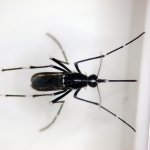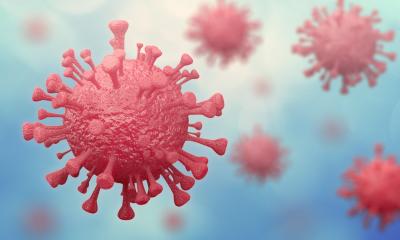Image source: Hans R. Gelderblom, Freya Kaulbars/RKI. Colouring: Andrea Schnartendorff
News • SARS-like virus from China
What we know about the new corona virus
Nine people have died and more than 400 have been sickened by the new corona virus spreading in China.
A few cases have been confirmed in Taiwan, Thailand, South Korea, Japan and the U.S., and on Wednesday, the World Health Organization is holding an emergency meeting on the outbreak. How worried about a new pandemic should we be? Virus researcher Ali Mirazimi, adjunct professor at the Department of Laboratory Medicine at Karolinska Institutet, gives his perspective.
How dangerous is the new corona virus?

Photo: Karolinska Institutet/Bildmakarna
"The corona virus has existed in animals and humans for quite some time. It usually results in symptoms resembling a common cold and is in most cases harmless. However, we have seen that some variants of the corona virus, such as SARS and MERS, can cause very serious illnesses. The genome of corona viruses consists of RNA, which means they have a genetic mass that can change quite easily and therefore spread to new hosts. That’s why we see different variants of this virus pop up from time to time."
How does it spread?
"From person-to-person, the corona virus spreads through the respiratory system. In this case, the researchers believe the virus has spread from an unknown source (likely an animal) to human. Currently, we don’t know how infectious this virus is between humans. It’s also hard to say how serious this new virus is but it doesn’t seem as aggressive as the SARS-virus that spread very quickly between humans in 2002-2003. The fact that only a few cases so far have been confirmed in countries outside China points to that. The SARS-outbreak killed some 10 percent of those infected compared to the around 2 percent who have died so far in China. But the virus can also adapt and in that case, it could spread much quicker."
How big is the risk that it will reach Sweden?
"Very small. The SARS-virus, which was very aggressive, never reached Sweden, and there were in general very few cases outside Southeast Asia. I don’t see any reason for alarm that this virus would spread to the Nordic region."
Are virus pandemics becoming more frequent?
"These viruses exist in various forms in different places around the world and sometimes they mutate and find new host organisms to thrive in. They have popped up from time to time throughout history, but today we receive information about them much quicker. We also travel much more than previously and live in large cities near animals and other people. Global warming also impacts the environments that wild animals and insects are drawn to, which indirectly affects humans."
Recommended article

Article • Global warming consequences
Asian mosquitos go West – and tropical diseases come along
Rising temperatures due to global warming are creating a permanent habitat in Europe for mosquitos from Asia. The Asian tiger mosquito (Aedes albopictus), or Aedes japonicas, are important vectors for the transmission of pathogens previously only found in tropical regions, like dengue fever, West Nile fever and the Chikungunya virus.
What can people do to protect themselves?
"There are currently no vaccines and it would likely take years to develop one. But people can think about washing their hands, keeping their fingers out of their mouths and cover their mouths if they cough or sneeze."
Source: Karolinska Institutet
22.01.2020











